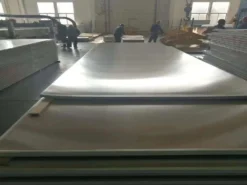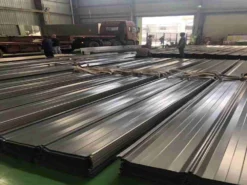304 stainless steel rod is an alloy steel material with pitting corrosion resistance, high temperature resistance, creep resistance and high strength.
-Implementation standards
Chinese standard:
Hot rolled and forged stainless steel rods: GB/T1220-2007;
Cold processed stainless steel rod: GB4226-2009
GB/T14975-2002, GB/T14976-2002, GB/T13296-91
American standard:
Stainless Steel Rods and Shapes Standard: ASTM A276-2011
General standard for stainless steel bars, billets and forgings ASTM A484-2011
Standard for easily machined stainless steel rods ASTM A582-2011
ASME SA276-2010
ASME SA484-2010
ASTM A484/A484M, ASTM A213/213A, ASTM A269/269M
Stainless steel rod materials: 304, 304L, 321, 316, 316L, 310S, 630, 1Cr13, 2Cr13, 3Cr13, 1Cr17Ni2, duplex steel, antibacterial steel and other materials.
-Classification:
Stainless steel rods can be divided into three types according to production technology: hot rolling, forging and cold drawing. Hot-rolled and forged stainless steel rods with dimensions (diameter, side length, thickness or distance between opposite sides) not greater than 250mm.
The specifications of hot-rolled stainless steel round bars are 5.5-250 mm. Among them: small stainless steel round bars of 5.5-25 mm are mostly supplied in straight strips and are commonly used as steel bars, bolts and various mechanical parts; stainless steel round bars larger than 25 mm are mainly used to manufacture mechanical parts or seamless steel pipe blanks.
Excellent pitting corrosion resistance and excellent high temperature creep strength.
-Features 1) The cold-rolled product has good gloss and beautiful appearance; 2) Added Mo, excellent corrosion resistance, especially pitting corrosion resistance; 3) Excellent high temperature strength; 4) Excellent work hardening (weak magnetism after processing ) 5) Non-magnetic in solid solution state; 6) Compared with 304 stainless steel, the price is higher.
-Scope of application: pipes, heat exchangers, food industry, chemical industry, etc.
304 stainless steel round rod, 304 stainless steel capillary rod
Brand: 0Cr18Ni9 (0Cr19Ni9)
Chemmical Component Element
C: ≤0.07, Si: ≤1.0,
Mn: ≤2.0,
Cr: 17.0~19.0,
Ni: 8.0~11.0,
S: ≤0.03,
P: ≤0.035.
Tensile strength (Mpa) 620 MIN
Yield strength (Mpa) 310 MIN
Elongation (%) 30 MIN
Area reduction (%) 40 MIN
The density of 304 stainless steel is 7.93 g/cm3. Austenitic stainless steel generally uses this value. 304 chromium content (%) 18–20. 304 is equivalent to my country’s 0Cr19Ni9 (0Cr18Ni9) stainless steel. 304 stainless steel is a universal stainless steel material. The anti-rust performance is stronger than that of 200 series stainless steel materials. It is also relatively good in terms of high temperature resistance and can reach temperatures as high as 1000-1200 degrees. 304 stainless steel has excellent stainless corrosion resistance and good intergranular corrosion resistance. For oxidizing acids, it was found in experiments that 304 stainless steel has strong corrosion resistance in nitric acid below the boiling temperature with a concentration of ≤65%. It also has good corrosion resistance to alkaline solutions and most organic and inorganic acids.
Nature-Advantage:
Yield strength (Mpa) 310 MIN
Elongation (%) 30 MIN
Area reduction (%) 40 MIN
The density of 304 stainless steel: 7.93 g/cm3. Austenitic stainless steel generally uses this value: 304 chromium content (%) 18–20. Compared with my country’s 0Cr19Ni9 (0Cr18Ni9) stainless steel, 304 stainless steel is a universal stainless steel material with stronger anti-rust performance than 200 series stainless steel materials. It is also better in terms of high temperature resistance.
Can be as high as 1000-1200 degrees. 304 stainless steel has excellent stainless corrosion resistance and good resistance to intergranular corrosion. The results in the experiment: 304 stainless steel has the strongest corrosion resistance in nitric acid below the heating temperature with a concentration of ≤65%. It has good corrosion resistance to alkali solutions and most organic and inorganic acids.
304 (18Cr-8Ni) material: As a widely used steel, it has good corrosion resistance/heat resistance, low temperature strength and mechanical properties; good hot workability such as stamping/bending, no heat treatment hardening phenomenon (non-magnetic, Use a temperature of -196℃~800℃). Usage: Household products (Class 1/2 tableware/cabinets/indoor piping/water heaters/boilers/bathtubs), auto parts (windshield wipers/mufflers/molded products), medical equipment, building materials, chemicals, food industry, agriculture, ship parts.













